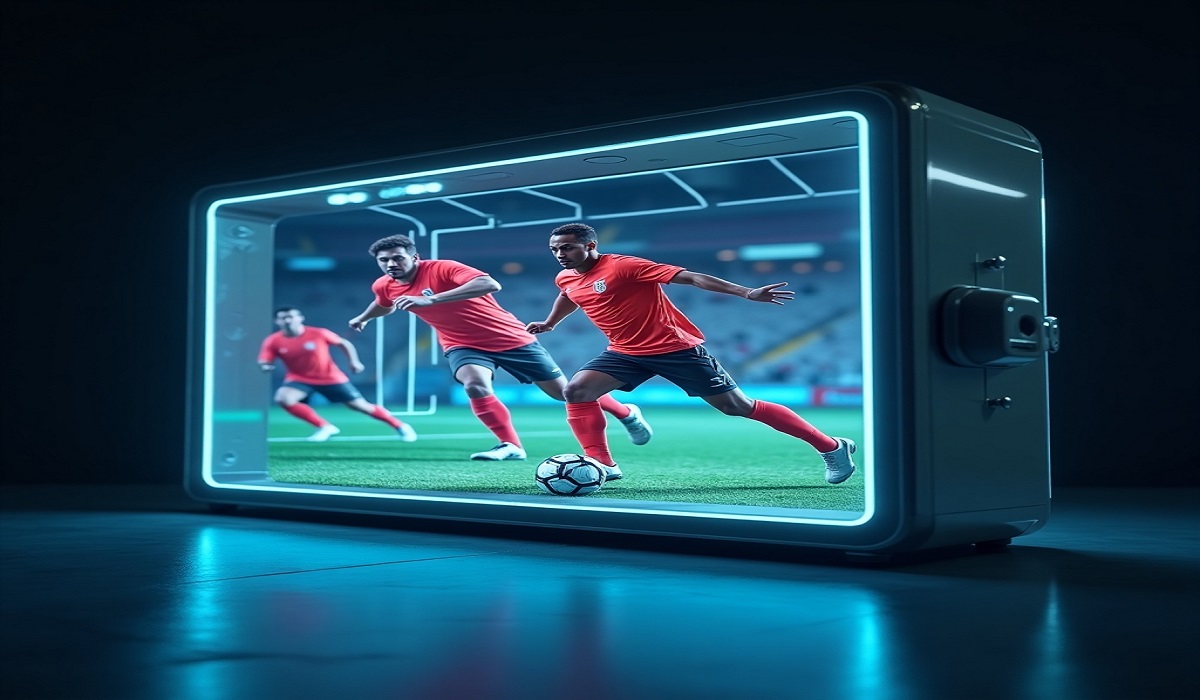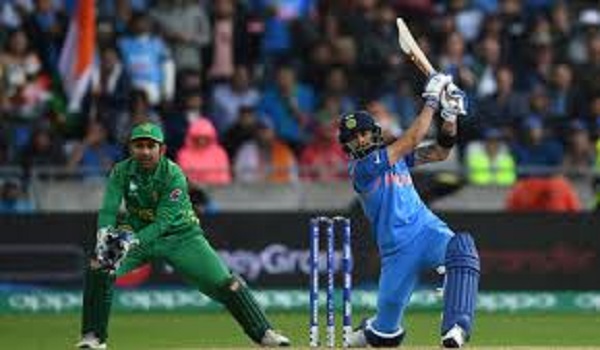Holographic Sports Replay Technology
Holographic Sports Replay Technology: emember watching a big game and arguing with your friends about a close call? Was the player’s foot on the line? Did the ball actually cross the plane? For years, we have relied on flat, 2D video screens to answer these questions. Now, a new way to see the action is changing the game.
This Holographic sports replay technology review will show you how these amazing 3D images work. We will look at the good parts and the challenges of this new tool. Get ready to see sports in a way you never have before. This is not science fiction; it is the new reality of how we watch and understand the games we love.
What is Holographic Sports Replay Technology?
Holographic sports replay technology is a system that creates a three-dimensional, moving image of a play. Think of it as a ghost-like, life-sized model of the players and the field that you can walk around and view from any angle. It is not a physical object, but a light-based projection that appears solid.
This technology takes data from many high-speed cameras placed around the stadium. Computers then use this data to build a digital 3D model of the entire scene. This model is projected into the air for everyone in the stadium or shown on your television screen.
The main goal of this technology is to bring clarity. A regular TV replay shows you one flat angle. The Holographic sports replay shows you the whole picture. You can see the spacing between players, the exact position of a ball, and the movements of every person on the field from a coach’s perspective or a bird’s-eye view.
This gives fans, coaches, and referees a complete understanding of what happened during a crucial moment. This Holographic sports replay technology review – Latest aims to explain why this is such a big step forward.
- It uses many cameras: Dozens of special cameras film the action from all sides.
- It builds a digital twin: Powerful computers take all the video and create a perfect 3D copy of the play.
- It projects the image: This 3D model is then shown as a hologram for people to see.
How the Technology Functions in a Live Game?
The process of creating a live Holographic sports replay is fast and complex. It happens in the time between one play ending and the next one starting. First, a network of ultra-high-definition cameras captures every movement on the field.
These cameras work together, recording at a very high frame rate. This means they take many pictures every second to catch fast actions without any blur.
Next, all the video feeds go to a central computer system. This is where the magic happens. The system uses a process called volumetric capture. It analyzes all the video data to figure out the exact shape and position of every object—players, the ball, officials. It builds a “point cloud,” which is a digital map made of millions of tiny dots. These dots form the 3D model.
Finally, this model is sent to the broadcast truck and to the stadium’s projection systems. Fans at home see a 3D animation on their screens, while fans in the stadium might see a large, glowing hologram appear over the field. This Holographic sports replay technology review – Latest finds the speed of this process truly impressive.
The Benefits for Fans and Officials
This new way of replaying sports offers many advantages. For the people watching, it makes the game more fun and easier to understand. You no longer have to guess what happened. You can see the entire play unfold in a clear, three-dimensional space. It feels like you are right there on the field. This makes watching sports more exciting and immersive.
For referees and officials, the value is even greater. Making the correct call is the most important part of their job. Holographic sports replay technology gives them a tool with perfect vision. They can rotate the image, zoom in, and look from directly above to see if a pass was complete or if a player stepped out of bounds.
This leads to fairer outcomes and fewer mistakes. Coaches can also use these replays during the game to make better strategies and at halftime to teach their players. This Holographic sports replay technology review – Latest believes this technology builds more trust in the game’s results.
- Clearer views for everyone: Fans get a better perspective than ever before.
- More accurate officiating: Referees have the best possible information to make calls.
- Improved strategy: Teams can analyze plays in great detail to improve.
Current Use in Professional Leagues
Where can you see this technology today? Several major sports leagues are already testing and using it. The National Football League (NFL) has experimented with Holographic sports replay systems to help with complicated catch rulings and spot-of-the-ball decisions. In basketball, the NBA has shown interest in using it to review block/charge calls, which are often very difficult to judge from a 2D angle.
Soccer leagues in Europe are also exploring its potential. They want to use it for offside calls and to see if the ball fully crossed the goal line. Even tennis and Olympic sports are looking at how this technology can help.
While it is not in every stadium yet, this Holographic sports replay technology review expects it to become a standard part of big sporting events very soon. The adoption is growing as the technology becomes more affordable and reliable.
Limitations and Hurdles for Widespread Use
Despite its amazing potential, Holographic sports replay technology faces some challenges. The biggest one is cost. Installing dozens of high-speed cameras and the powerful computers needed to process the data is very expensive.
This means that smaller leagues or schools cannot afford it yet. There is also a significant technical challenge in making the system work perfectly in all weather conditions, like heavy rain or bright sun.
Another hurdle is integration. Getting all the different broadcasters and leagues to use the same system takes time. Officials and production crews need special training to use the technology effectively during a fast-paced game.
This Holographic sports replay technology review acknowledges that these problems are real, but they are likely to be solved as the technology continues to improve and become cheaper over the next few years.
The Future of Watching Sports with Holograms
What does the future hold? This Holographic sports replay technology review – Latest sees a very bright future. Soon, you might not just watch the hologram on your TV. You could use augmented reality (AR) glasses to see the replay floating in your own living room. You could walk around the play and see it from your own favorite spot.
The technology will also get faster and more detailed. We will see replays that are almost instant and in even higher resolution. This could lead to new ways to watch sports, with interactive holograms that let you control the view yourself. The line between being in the stadium and watching from home will become blurrier. This evolution will change the fan experience in ways we are just beginning to imagine.
Frequently Asked Questions
1. How is holographic replay different from VAR or instant replay?
Traditional instant replay and VAR (Video Assistant Referee) use standard 2D television cameras. They show a flat picture from one angle at a time. Holographic sports replay technology creates a full 3D model of the entire play, which you can view and rotate from any perspective, giving a complete picture.
2. Can fans at home see the holograms on a regular TV?
Yes, but they see a broadcast version. The 3D model is shown on your screen as a moving graphic that the broadcaster can rotate and zoom. You are seeing a video of the hologram, which still provides a much better view than a standard replay.
3. What sports benefit the most from this technology?
Sports with complex spatial relationships benefit greatly. Football, soccer, and basketball are prime examples because understanding player positioning is key. This Holographic sports replay technology review – Latest also sees value for tennis, baseball, and ice hockey.
4. Is the technology used for every play in a game?
No, it is not. Due to the processing power required, it is typically used only for crucial moments that are under official review or for special broadcast features. It is used for plays that need a very close look.
5. How soon will this be available at local high school games?
It will likely take many years. The cost is still too high for widespread use at smaller venues. This technology will first become standard in professional leagues before it trickles down to college, and eventually, to high school sports.
Conclusion
Holographic sports replay technology is more than just a cool new effect; it is a tool that improves the game for everyone involved. It brings clarity, fairness, and a new level of excitement to sports. This Holographic sports replay technology review has shown how it works, its many benefits, and the challenges it still faces. While it is still growing, its potential is undeniable. The next time you watch a big game, listen for the announcer to talk about the 3D replay. You will be watching the future of sports broadcasting, and it looks incredible.









